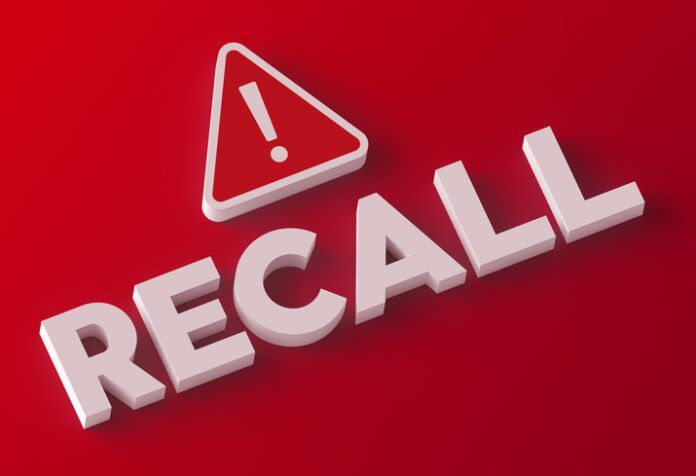A friend asked me the other day, “Aren’t you concerned about feeding food from [company name redacted]? Because of all the recalls they’ve had?” When she clarified that the recall she was referencing was for Salmonella in a raw food, I told her why that didn’t particularly worry me. However, some recalls for Salmonella in dry dog foods concern me a bit more. She found the explanation interesting, so I’m going to reiterate it here:
Salmonella is a nearly ubiquitous bacteria in the animal world. Cattle, chickens, rodents, reptiles, and amphibians commonly carry Salmonella in their intestines and show no signs of illness. According to the Merck Manual, salmonellosis is most prevalent in regions with intensive animal husbandry, where food-source animals live in densely packed spaces where contact with their feces cannot be avoided. More than 2,500 groups (called serotypes) of Salmonella have been identified, including around 100 that cause illness (called salmonellosis) in humans.
According to the U.S. Food and Drug Administration (FDA), humans commonly get infected with Salmonella by eating contaminated food, such as raw or undercooked meat and poultry products, raw or undercooked eggs or egg products, raw or unpasteurized milk and dairy products, and raw fruits and vegetables. Poultry is among the leading sources of Salmonella foodborne illness acquired domestically in the United States. Currently, according to Consumer Reports, a chicken processing facility is allowed to have Salmonella in up to 9.8 percent of all whole birds it tests, 15.4 percent of all parts, and 25 percent of ground chicken. Food producers and manufacturers are expected to take all steps possible to reduce the levels of bacteria in their products, but the fact that there are allowable amounts at all is due to the expectation that the meats will be cooked before being consumed, thus rendering the bacteria harmless.
Humans are much more prone to salmonellosis than dogs. According to the Centers for Disease Control and Prevention:
“Each year in the U.S., there are about 1.35 million cases of salmonellosis, with 26,500 hospitalizations and 420 deaths. Contaminated food is the source for most of these cases. Salmonellosis is the second leading cause of foodborne illnesses in the U.S. (after norovirus), but is the leading cause of hospitalizations and deaths from food poisoning.”
In contrast to humans, dogs who consume Salmonella-infected food (or Salmonella-infected feces) rarely suffer symptoms of salmonellosis. Cases of salmonellosis in dogs seem to occur only if a dog has consumed a sufficiently large dose of a virulent serotype of the bacteria, in which case they may develop acute enteritis. Some studies assert that as many as 20% of dogs may be infected with Salmonella—some with more than one serotype—without any symptoms of illness. Dogs who are carriers of the bacteria can shed the bacteria in their feces and saliva and thus serve as sources of infection in humans.
This is why the FDA is concerned about Salmonella in pet food, treats, and chews—because of the risk to humans who handle pet food and dishes, and who have household contact with dogs who may become infected from eating/chewing contaminated food.
When Should We Worry?
Because of the relatively ample amounts of Salmonella in our meat supply, it should be understood that pet food that is meant to be served to our dogs uncooked may well contain some amount of Salmonella, unless that food has been treated in some way to kill the bacteria. In addition to cooking, pet food producers may use high pressure pasteurization (HPP), irradiation, lactic and acetic acid washes, and/or a new technique called refrigerated instantaneous temperature cycling (RITC), a direct steam injection and vacuum expansion chilling meat pasteurization system, to reduce or eliminate the pathogenic bacteria that may be present in their products.
If the producer of a raw meat-based pet food doesn’t take any of these steps, they stand a much higher chance of having Salmonella detected in their products by the FDA, who will then issue a recall for the entire batch or lot of food that delivered a positive test result—even though the chance of a dog getting sick from the product is vanishingly small. In this case, it’s the humans who live with the dogs who eat the food that the FDA is trying to protect.
Still, people who feed raw diets to their dogs are generally aware of the risks of Salmonella (and other pathogenic bacteria) that may be present in raw meat-based foods, and handle those products and their serving dishes accordingly. You’d never let your toddler or an immune-compromised person in your household handle raw chicken, and every raw dog food I’ve ever seen is covered with warnings to protect vulnerable humans from exposure to the potential presence of pathogenic bacteria in a similar fashion.
I have greater concern about foods that have been produced via a method that absolutely kills pathogenic bacteria—that is, extruded and baked dry foods—that have tested positive for Salmonella. Why? Because most people handle these products as if they do not contain potentially pathogenic bacteria. Lots of people use kibble as treats, using their bare hands. Few people wash their dogs’ bowls daily in hot water and with soap, or wash their hands well after handling kibble or their kibble scooper. Most of us handle kibble like a breakfast cereal, free of pathogens—because it is supposed to be, but it might not be!
Baking and extruding does kill pathogenic bacteria, so when a dry food tests positive for Salmonella, it’s evidence that the food was contaminated after it was baked or extruded, either by bacterial-contaminated equipment or contaminated coatings that are applied after the kibble is cooked. Either route of contamination indicates a faulty or sloppy process, which makes me suspicious of the producer’s abilities.
All of this is why I’m not particularly concerned when a raw-food manufacturer has a recall for Salmonella-contaminated food, but my hackles go up when a dry-food maker issues an identical recall notice. In neither case am I worried about dogs getting sick from Salmonella; rather, I worry about vulnerable humans (such as toddlers or immune-compromised people) getting sick from treating kibble as an absolutely safe product when it may not be.






